Whirlpool ACO 164, ACO 165, ACO 023, ACO 118, ACO 111 User Manual
...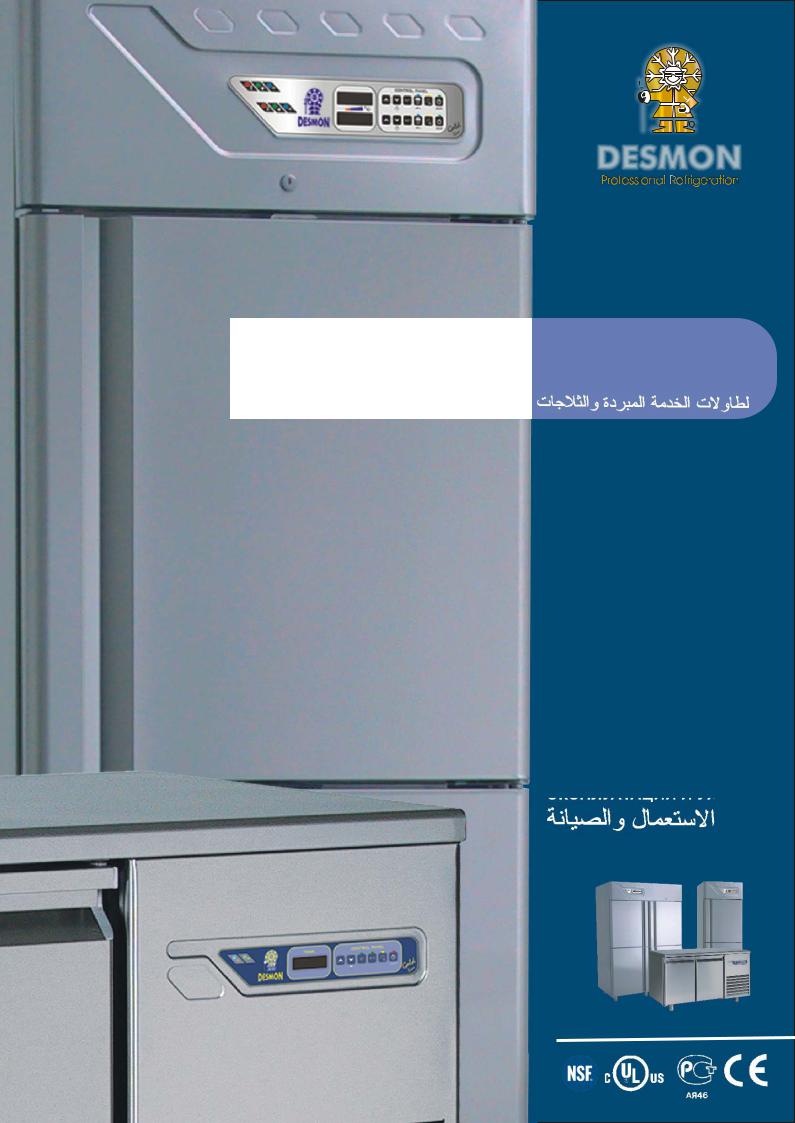

ITALIANO |
2 |
|
|
ENGLISH |
16 |
|
|
DEUTSCH |
31 |
|
|
FRANÇAIS |
46 |
|
|
ESPAÑOL |
61 |
|
|
GEBRUIK EN HET
75
ONDERHOUD
PYCCKÈÉ |
89 |
|
|
104

|
INDICE |
1. INFORMAZIONI GENERALI |
pagina 2 |
1.1COSTRUTTORE
1.2CENTRI DI ASSISTENZA
1.3CERTIFICAZIONE
1.4GARANZIA
1.5PREDISPOSIZIONI A CARICO CLIENTE
1.6STRUTTURA DEL MANUALE
1.6.1SCOPO E CONTENUTO
1.6.2DESTINATARI
1.6.3CONSERVAZIONE
1.6.4SIMBOLI UTILIZZATI
2. |
DESCRIZIONE E FUNZIONAMENTO DELLA MACCHINA |
pagina |
4 |
2.1 |
DESCRIZIONE |
|
|
2.2 |
FUNZIONAMENTO |
|
|
3. |
PREDISPOSIZIONI |
pagina |
4 |
3.1ILLUMINAZIONE
3.2VIBRAZIONI
3.3EMISSIONI SONORE
3.3.1FORNITURE A RICHIESTA
3.4AMBIENTE ELETTROMAGNETICO
4. |
SICUREZZA |
pagina |
5 |
4.1AVVERTENZE GENERALI
4.2USO PREVISTO
4.3CONTROINDICAZIONI D’USO
4.4ZONE PERICOLOSE
4.5ARRESTO MACCHINA
4.6TARGHE
5. |
TRASPORTO E MOVIMENTAZIONE |
pagina |
8 |
5.1 |
TRASPORTO E MOVIMENTAZIONE |
|
|
5.2 |
STOCCAGGIO |
|
|
5.3 |
VERIFICHE |
|
|
6. |
INSTALLAZIONE |
pagina |
8 |
6.1MESSA IN OPERA
6.2MONTAGGIO
6.3PREDISPOSIZIONI
6.4COLLEGAMENTI
6.4.1ELETTRICO
6.4.2IDRAULICO
6.4.3PREDISPOSIZIONI PER OPTIONAL
7. |
FUNZIONAMENTO |
pagina |
11 |
7.1ADDETTI
7.2MESSA IN FUNZIONE
7.3TEMPORIZZATORI
7.4REGOLAZIONE DELLA TEMPERATURA
7.5STOCCAGGIO DEGLI ALIMENTI
7.6CONSERVAZIONE DEI CIBI
8. |
MANUTENZIONE ORDINARIA E PROGRAMMATA |
pagina |
12 |
8.1NORME ELEMENTARI DI SICUREZZA
8.1.1PROIBIZIONE DELLA RIMOZIONE DEI RIPARI E DEI DISPOSITIVI DI SICUREZZA
8.1.2INDICAZIONI SULLE OPERAZIONI DI EMERGENZA IN CASO D’INCENDIO
8.1.3PULIZIA DELLE PARTI ESTERNE
8.1.4PULIZIA DEL CONDENSATORE
8.1.5VERIFICHE PERIODICHE DA ESEGUIRE
9. |
MANUTENZIONE STRORDINARIA E RIPARAZIONE |
pagina |
13 |
10. |
DIAGNOSTICA |
pagina |
14 |
11. |
RICAMBI |
pagina |
14 |
11 .1 |
FORNITURA DI RICAMBI ORIGINALI |
|
|
12. |
DEMOLIZIONE |
pagina |
15 |
13 |
ALLEGATI |
pagina |
15 |
13 .1 |
DICHIARAZIONI |
|
|
13 .2 |
DOCUMENTAZIONE TECNICA |
|
|
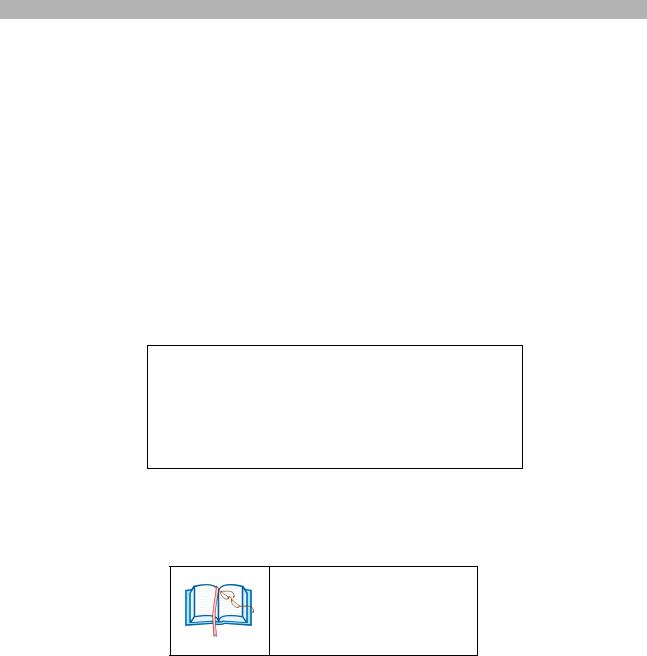
1.INFORMAZIONI GENERALI
1. 1 COSTRUTTORE
Vantiamo una consolidata esperienza nel campo della refrigerazione industriale.
Il Know-how tecnologico acquisito, creatosi in anni di ricerche a stretto contatto con la produzione e la commercializzazione a livello internazionale, rappresenta la miglior garanzia che possiamo offrire.
Questa apparecchiatura è stata studiata negli interni, nell’estetica e nella componentistica, secondo le esigenze specifiche del Vs. mercato. E‘ inoltre, stata controllata funzionalmente ed esteticamente in ogni sua parte prima dell’invio definitivo, come risulta dal CERTIFICATO DI GARANZIA E DI COLLAUDO accluso alla presente documentazione.
Usate, quindi, questo apparecchio attenendovi a quanto suggerito dal presente manuale per garantirne la durabilità.
1.2CENTRI DI ASSISTENZA
( Vendita, Assistenza, Ricambi e Rappresentanza Commerciale )
TIMBRO RIVENDITORE
Per qualsiasi necessità inerente l’uso, la manutenzione o la richiesta di parti di ricambio, il Cliente è pregato di rivolgersi al proprio rivenditore, specificando i dati identificativi dell’apparecchiatura (Modello, anno e serial number) riportati sulle targhe :
Vedere Targa A al paragrafo 4. 6
C 1
1.3CERTIFICAZIONE
Gli Armadi, i Tavoli Frigoriferi ed i Gruppi Frigoriferi Condensati ad aria vengono realizzati in conformità delle Direttive Comunitarie pertinenti ed applicabili nel momento della sua immissione sul mercato.
Non rientrando l’armadio e il tavolo frigorifero nell’ ALLEGATO IV della DIRETTIVA 98/37/CEE, il costruttore provvede alla Autocertificazione per apporre la marcatura CE .
1. 4 GARANZIA
La nuova apparecchiatura è coperta da GARANZIA.
Il CERTIFICATO DI GARANZIA è inserito assieme con il presente libretto all‘interno di ogni prodotto. Se doveste riscontrare la mancanza del suddetto Certificato, richiedetelo al Vs. fornitore indicando:
•Il numero di matricola e anno di costruzione (stampigliato sulla relativa targhetta, vedi paragrafo 4. 6);
•La data d‘acquisto.
2

1. 5 PREDISPOSIZIONI A CARICO CLIENTE
E’ cura del Cliente, eseguire quanto indicato nella Documentazione.
Fatti salvi eventuali accordi contrattuali diversi, sono normalmente a carico del Cliente :
•Predisposizioni dei locali, comprese eventuali opere murarie e/o canalizzazioni richieste;
•Alimentazione Elettrica in conformità alle Norme vigenti nel Paese di utilizzo;
•Materiali di consumo per la pulizia.
1. 6 STRUTTURA DEL MANUALE
Il Cliente deve leggere con estrema attenzione le informazioni riportate nel presente Manuale, in quanto una corretta predisposizione, installazione ed utilizzazione costituiscono la base del rapporto Costruttore - Cliente.
1. 6. 1 SCOPO E CONTENUTO
Lo scopo del presente manuale è quello di fornire al Cliente tutte le informazioni necessarie per un adeguato utilizzo dell‘Apparecchiatura, e per gestire la stessa nel modo più autonomo e sicuro possibile. Esso comprende le informazioni relative all'aspetto Tecnico, al Funzionamento, al Fermo, alla Manutenzione, ai Ricambi ed alla Sicurezza.
Prima di effettuare qualsiasi operazione sull’apparecchiatura, gli Utilizzatori ed i Tecnici Qualificati devono leggere attentamente le istruzioni contenute nel presente manuale d’uso e manutenzione.
In caso di dubbi sulla corretta interpretazione delle istruzioni, interpellare il Rivenditore per ottenere i necessari chiarimenti.
1. 6. 2 DESTINATARI
Il Manuale in oggetto è rivolto ai Rivenditori, agli Utilizzatori, ed ai Manutentori abilitati alla Manutenzione dell‘Apparecchiatura.
È espressamente vietato agli Utilizzatori di eseguire operazioni riservate a Manutentori o a Tecnici qualificati. Il Costruttore non risponde di danni derivanti dalla mancata osservanza di questo divieto.
1. 6. 3 CONSERVAZIONE
Il Manuale di Uso e Manutenzione deve essere conservato nelle immediate vicinanze dell’Apparecchio, dentro un apposito contenitore e, soprattutto, al riparo da liquidi e quant'altro ne possa compromettere lo stato di leggibilità.
1. 6. 4 SIMBOLI UTILIZZATI
|
SIMBOLO |
|
|
SIGNIFICATO |
|
|
COMMENTO |
|
|
|
|
|
|
||||
|
|
|
|
|
|
|
Indica una avvertenza od una nota su funzioni |
|
|
|
|
|
AVVERTENZA |
|
|
chiave o su informazioni utili. |
|
|
|
|
|
|
|
Prestare la massima attenzione ai blocchi di |
|
|
|
|
|
|
|
|
|
|
|
|
|
A ... |
|
|
|
|
testo evidenziati da questo simbolo. |
|
|
|
|
|
|
|
|
||
|
|
|
|
CONSULTAZIONE |
|
|
Occorre consultare il Libro Istruzioni prima di |
|
|
|
|
|
|
|
effettuare una determinata operazione. |
|
|
|
|
|
|
|
|
|
|
|
|
|
C ... |
|
|
|
|
|
|
|
|
|
|
|
3 |
|
|
|

2. DESCRIZIONE E FUNZIONAMENTO DELLA MACCHINA
2. 1 DESCRIZIONE
Gli armadi sono gruppi frigoriferi condensati ad aria composti nella parte impiantistica da:
•Unità condensante (esterno cella)
•Unità evaporante (interno cella)
•Quadro di controllo e comando (posto sul frontale porta strumenti), ( vedi allegato 13.2.3).
vedi allegato 13.2.3).
•Lo sbrinamento è automatico, ( vedi allegato 13.2.1).
vedi allegato 13.2.1).
•La condensazione avviene ad aria.
2. 2 FUNZIONAMENTO
Gli Armadi sono gruppi frigoriferi funzionanti tramite compressore frigorifero di tipo ermetico, alimentato dalla rete elettrica (monofase o trifase) e utilizzante come refrigerante, fluido R 404 A / R 134 A .
Principio funzionamento ciclo frigorifero
In termodinamica per ciclo frigorifero si intende l’insieme dei cambiamenti di stato a cui è sottoposto un determinato corpo (ad esempio un fluido frigorigeno). Il passaggio del fluido frigorigeno dallo stato liquido allo stato gassoso avviene all’evaporatore. Poiché questo fenomeno di stato è un fenomeno endotermico, esso necessita di un apporto di calore che all’occorrenza, viene prelevato dall’aria con cui l’evaporatore è a contatto. Ne consegue che all’uscita dall’evaporatore, i vapori del fluido frigorigeno vengono aspirati da un compressore e da qui inviati al condensatore. Se poi quest’ultimo elemento sottrae non solo il calore che il fluido frigorigeno gassoso aveva immagazzinato nel corso dell’evaporazione (entalpia di evaporazione), ma anche l’equivalente calorifico del lavoro di compressione, il fluido ritorna allo stato liquido.
Essendo la liquefazione un fenomeno esotermico, si ha produzione di calore, che viene smaltito sia per mezzo dell’aria sia per mezzo dell’acqua. Dopo essere uscito dal condensatore, il fluido frigorigeno liquido attraversa un organo di espansione e ritorna all’evaporatore, completando così il ciclo.
3. PREDISPOSIZIONI
3. 1 ILLUMINAZIONE
L’illuminazione del locale deve essere conforme alle leggi vigenti nel Paese in cui è installata la macchina e deve comunque garantire una buona visibilità in ogni punto, non creare riflessi pericolosi e consentire la chiara lettura dei punti di comando.
3. 2 VIBRAZIONI
In condizioni di impiego conformi alle indicazioni di corretto utilizzo, le vibrazioni non sono tali da fare insorgere situazioni di pericolo.
3. 3 EMISSIONI SONORE
Il gruppo frigorifero è progettato e realizzato in modo da ridurre alla sorgente il livello di emissione sonora. ( vedi allegato 2)
vedi allegato 2)
4

3. 3. 1 FORNITURE A RICHIESTA
Resta inteso che qualsiasi modifica e/o aggiunta di accessori, deve essere esplicitamente approvata e realizzata a cura del Costruttore .
Qualsiasi modifica o alterazione apportata al frigorifero dall’operatore e/o dal manutentore è vietata per ragioni di sicurezza.
AVVERTENZA Il Costruttore declina ogni responsabilità in caso di modifiche non autorizzate
A...
3.4 AMBIENTE ELETTROMAGNETICO
Il frigorifero è realizzato per operare correttamente in un ambiente elettromagnetico di tipo industriale, rientrando nei limiti di Emissione ed Immunità previsti dalle seguenti Norme armonizzate:
EN 50081-2 Compatibilità elettromagnetica - Norma generica di emissione - Parte 2 - Ambiente industriale - (1993)
EN 50082-2 Compatibilità elettromagnetica - Norma generica di Immunità - Parte 2 - Ambiente industriale - (1995)
4.SICUREZZA
4. 1 AVVERTENZE GENERALI
L’Utilizzatore deve leggere con molta attenzione le informazioni riportate nel presente Manuale, con particolare riguardo alle opportune precauzioni per la Sicurezza elencate in questo capitolo.
E’ indispensabile, inoltre, che l’Utilizzatore segua le avvertenze di seguito elencate :
•Mantenere la cella frigorifera in ordine e pulita;
•Non rimuovere od alterare le targhe apposte dal Costruttore (vedi 4.6);
•Non rimuovere od eludere i sistemi di Sicurezza;
•Non toccare la macchina avendo mani e piedi umidi o bagnati;
•Non toccare la macchina a piedi nudi;
•Non inserire cacciaviti o altro tra le protezioni o le parti in movimento;
•Non tirare il cavo di alimentazione per scollegare la macchina dalla rete di alimentazione;
•Prima di effettuare qualsiasi operazione di pulizia e/o manutenzione disinserire la macchina dalla rete di alimentazione elettrica spegnendo prima l‘interruttore generale e poi staccando la spina.
4. 2 USO PREVISTO
L’armadio e/o il tavolo frigorifero è concepito e costruito per l’utilizzo in Comunità, Ristoranti, Alberghi ecc.
4. 3 CONTROINDICAZIONI D’USO
L’armadio e/o il tavolo frigorifero non deve essere utilizzato :
•Per utilizzi diversi da quelli esposti al 4.2
•In atmosfera esplosiva, aggressiva o ad alta concentrazione di polveri o sostanze oleose in sospensione nell’aria;
•In atmosfera a rischio d'incendio;
•Esposto alle intemperie;
•Con adattatori, prese multiple e/o prolunghe;
5
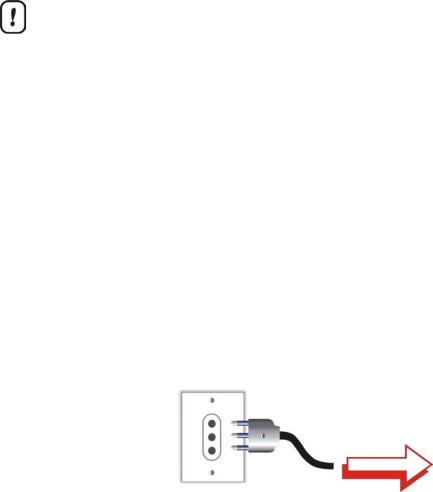
4. 4 ZONE PERICOLOSE
Non esistono zone pericolose, durante l’uso, in quanto l’armadio e/o il tavolo frigorifero è provvisto di tutti i dispositivi di sicurezza necessari.
Se si devono effettuare riparazioni e/o manutenzioni rimuovendo i dispositivi di sicurezza, accertarsi sempre che le fonti di energia siano state, prima, disattivate.
A tale scopo nell’ Armadio e/o nel Tavolo Frigorifero va disattivato:
-L’impianto elettrico mediante spegnimento dell’ interruttore generale e successivo disinserimento del cavo di alimentazione dalla rete ;
A fine lavori è importante rimontare rigorosamente i dispositivi di sicurezza.
4. 5 ARRESTO MACCHINA
Per l’arresto dell’ Armadio e/o del Tavolo Frigorifero, è necessario procedere come segue :
•Portare l’interruttore Generale sulla posizione di spegnimento.
•Rimuovere il cavo di alimentazione.
6
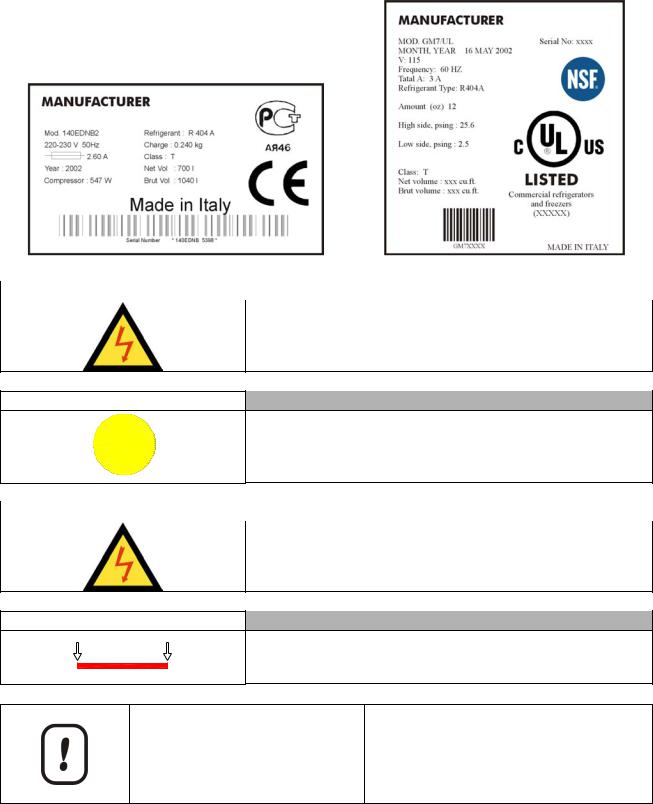
4. 6 TARGHE
Targa relativa alle caratteristiche della macchina |
TARGA A |
Esempio |
Esempio (solo USA) |
|
|
Targa relativa all’Apparato Elettrico |
TARGA B |
Togliere la tensione prima di rimuovere la protezione
Targa relativa all’Apparato Elettrico |
TARGA |
C |
|
Simbolo di terra. |
|
Targa relativa all’Apparato Elettrico |
TARGA D |
|
Attenzione! la ditta costruttrice e la distributrice declinano ogni responsabilità se la linea di alimentazione non è protetta da interruttore magnetotermico ad alta sensibilità (IN - 16 A ID – 30 mA) collegato all’impianto generale di terra.
Targa interna |
PLAQUE E |
Max. Level |
max. high load |
LE TARGHE DI AVVERTIMENTO CHE
SVOLGONO FUNZIONE DI SICUREZZA NON
AVVERTENZA DEVONO ESERE RIMOSSE, COPERTE O
DANNEGGIATE
A ...
7

5. TRASPORTO E MOVIMENTAZIONE
LEGGERE ATTENTAMENTE LE AVVERTENZE CONTENUTE NEL PRESENTE MANUALE IN QUANTO FORNISCONO IMPORTANTI INDICAZIONI RIGUARDANTI LA SICUREZZA DI INSTALLAZIONE D’USO E DI MANUTENZIONE.
CONSERVARE CON CURA QUESTO MANUALE PER OGNI ULTERIORE CONSULTAZIONE.
5.1TRASPORTO E MOVIMENTAZIONE
Il trasporto e la movimentazione dell’Armadio e/o del Tavolo Frigorifero devono assolutamente avvenire mantenendo la posizione verticale, rispettando le eventuali indicazioni poste sull’imballo.
Il Trasporto deve essere effettuato da Personale professionalmente qualificato .
L’armadio e/o il tavolo frigorifero deve essere trasportato in modo tale da evitare qualsiasi danno alle parti.
In relazione al tipo di trasporto, occorre proteggere l’armadio e/o il tavolo frigorifero da tutti gli urti e sollecitazioni possibili.
L’armadio e/o tavolo il frigorifero viene preparato per il trasporto con imballo o senza, a seconda del mezzo e della via di trasporto. L’imballo può essere effettuato in cartone oppure in cartone e legno.
La movimentazione dell’Armadio e/o del Tavolo Frigorifero deve essere effettuata utilizzando un carrello sollevatore o trans-pallet provvisto di forche idonee (lunghezza almeno pari a 2/3 del mobile).
Eventuali danni causati alla macchina durante il Trasporto e/o la Movimentazione, non sono coperti da GARANZIA.
Riparazioni o sostituzioni di parti danneggiate sono a carico del Cliente.
5. 2 STOCCAGGIO
In caso di lunga inattività, l’armadio e/o il tavolo frigorifero deve essere immagazzinato con le precauzioni relative al luogo ed ai tempi di stoccaggio :
•Immagazzinare l’armadio e/o il tavolo frigorifero in luogo chiuso;
•Proteggere l’armadio e/o il tavolo frigorifero da urti e sollecitazioni;
•Proteggere l’armadio e/o il tavolo frigorifero dall'umidità e da escursioni termiche elevate;
•Evitare che l’armadio e/o il tavolo frigorifero venga a contatto con sostanze corrosive;
5. 3 VERIFICHE
Prima della messa in funzione dell’Armadio e/o del tavolo Frigorifero, è necessario eseguire una serie di verifiche e controlli allo scopo di prevenire errori od incidenti durante la fase di Messa in funzione .
•Verificare che l’armadio e/o il tavolo frigorifero non abbia subito danni durante la fase di montaggio
•Verificare, con particolare cura, l’integrità del pannello di comando, cavi elettrici e tubazioni .
•Controllare l’esatto collegamento di tutte le fonti di energia esterne.
•Verificare il libero movimento e rotazione di tutte le parti mobili.
6. INSTALLAZIONE
Per ottenere un funzionamento ottimale dell’unità si consiglia di posizionare il frigorifero in un luogo con un buon ricambio di aria e lontano da elevate fonti di calore.
8
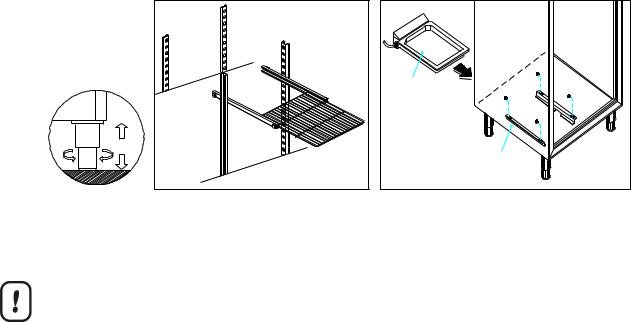
6. 1 MESSA IN OPERA
•Rimuovere accuratamente l’imballo del frigorifero;
•Rimuovere la protezione in PVC bianco dall’acciaio e tutto quanto predisposto dall’azienda per ridurre al minimo i rischi di danni da trasporto;
•Sistemare il frigorifero su una superficie piana e livellata (agire sui piedini regolabili). (Fig. 1)
Prima dell’uso pulire il frigorifero in tutte le sue parti con un panno pulito e morbido, oppure, usare un prodotto da nebulizzare; è opportuno usare poca acqua in quanto contiene in sospensione materie minerali che lasciano tracce difficili da eliminare e da asportare entro breve tempo.
•Lavare la vasca e tutte le parti interne usando detersivi antibatterici che si trovano in commercio;
•Rimuovere i detersivi con una spugna morbida imbevuta d’acqua ed asciugare con un panno morbido e pulito.
Non usare detersivi e/o polveri abrasive che potrebbero opacizzare le finiture.
Durante tutte queste fasi, come già detto, non usare una grande quantità d‘acqua onde evitare il danneggiamento di parti elettriche; è sufficiente una spugna imbevuta.
•Sistemare i supporti griglia all’interno della cella, nella posizione più consona all’uso, inserendo ogni supporto nei montanti forati fissati sul fondo della cella ed innestando la linguetta laterale nell’apposita sede ricavata sui fianchi o sui montanti del tavolo. (Fig. 2)
•Far scivolare le griglie all’interno dei supporti come raffigurato in Figura 2
•Inserire nelle apposite guide, ubicate nella parte inferiore del frigorifero, la vaschetta scarico condensa e per le macchine che montano vaschetta automatica collegare il connettore. (Fig. 3)
Fig. 1 |
Fig. 2 |
vaschetta |
guidareggi vaschetta |
Fig. 3 (vedi allegato 13.2.4 .1) |
6. 3 PREDISPOSIZIONI
•Accertarsi che la sezione dei cavi e la presa siano idonei alla potenza assorbita dall‘apparecchiatura.
E‘ VIETATO L‘USO DI ADATTATORI, PRESE MULTIPLE E/O PROLUNGHE
•Assicurarsi che l’armadio e/o il tavolo frigorifero non sia collegato nei pressi di una sorgente di calore come: forni, radiatori, raggi solari diretti etc.
•Lasciare uno spazio di almeno 75 mm. (3 inches) fra il retro dell’armadio e/o del tavolo e l’eventuale parete, onde evitare formazioni di condensa.
•Il vano motore deve essere libero da qualsiasi ostacolo in grado di impedire o limitare la circolazione dell’aria attraverso l’unità condensante sita nella parte laterale superiore del frigorifero;
•La distanza fra frigorifero e soffitto non deve essere inferiore a 50 cm. (19¾ inches)
9
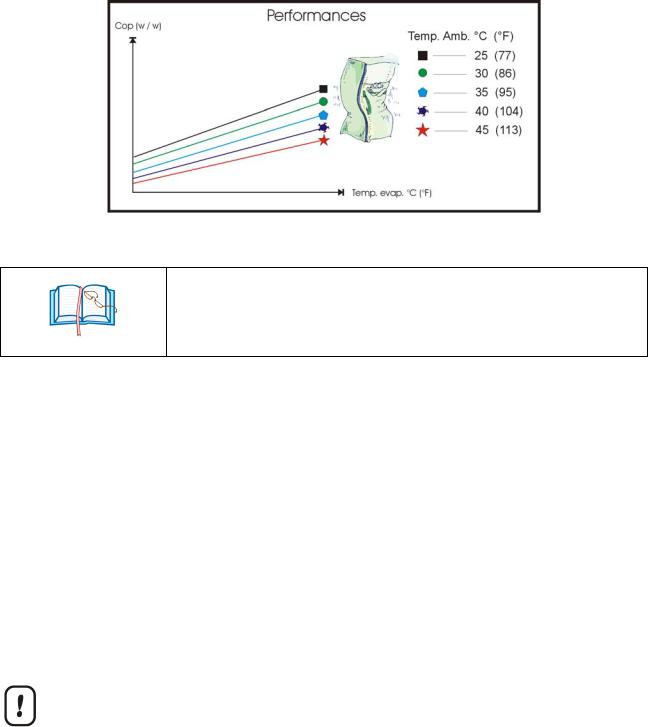
•Accertarsi che l’ambiente assicuri un sufficiente ricambio d’aria, onde garantire il raffreddamento del condensatore e del gruppo compressore.
•Per il perfetto funzionamento dell’apparecchio la temperatura massima degli ambienti non deve superare i + 43° C (109°F).
Il mancato rispetto di dette condizioni provocherebbe un grave scadimento delle prestazioni dell’apparecchio, un precoce invecchiamento del compressore ed un consumo di energia notevolmente superiore a quello normale (Fig. 4)
Fig. 4
Consultare, inoltre, le informazioni contenute al paragrafo 1. 5
C 2
6. 4 COLLEGAMENTI
Al fine di evitare qualsiasi tipo di problema al momento dell'avviamento dell’Armadio e/o del Tavolo Frigorifero, è bene attenersi a quanto di seguito descritto .
6. 4. 1 COLLEGAMENTO ELETTRICO
L’allacciamento elettrico dell’Armadio e/o del Tavolo Frigorifero è realizzato a cura e responsabilità del Cliente. Il collegamento alla linea elettrica deve essere conforme alle leggi vigenti nel Paese in cui è installata.
•Verificare che la tensione di alimentazione corrisponda esattamente all’indicazione dell’armadio e/o del tavolo (vedi Targa A)
•Verificare che la presa sia conforme alle norme vigenti.
•Prestare particolare attenzione che non siano presenti fili scoperti.
•Controllare la messa a terra.
IL COLLEGAMENTO A TERRA DELL’APPARECCHIO É UNA NORMA DI SICUREZZA OBBLIGATORIA PER LEGGE (vedi Targa C).
Qualora si allineano più apparecchiature, ciascuno di esse dovrà essere alimentata indipendentemente dall’ altra.
10
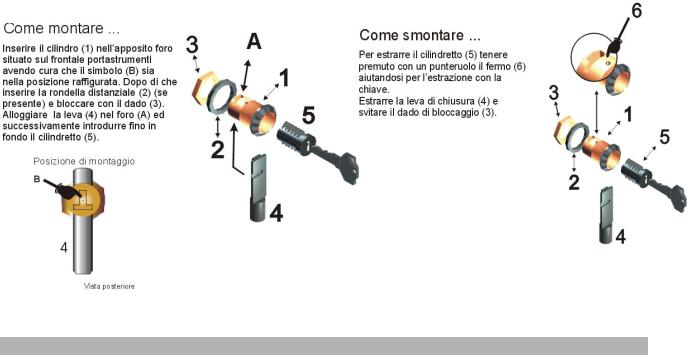
Al fine di salvaguardare l’impianto elettrico del frigorifero da eventuali sovraccarichi o corto circuiti, installare a monte della presa del frigorifero un interruttore magnetotermico di adeguato potere di interruzione. (vedi targa D)
6. 4. 2 COLLEGAMENTO IDRAULICO
Qualora i modelli siano sprovvisti di unità condensante a bordo è necessario prevedere l’allacciamento alla rete di drenaggio per lo scarico dell’acqua di sbrinamento utilizzando un tubo idoneo di sezione adeguata .
6. 4. 3 PREDISPOSIZIONE SERRATURA
Serratura: tutti gli armadi frigoriferi sono provvisti di predisposizione per il montaggio serratura. Per il montaggio si veda la Fig. 5
Fig. 5
7. FUNZIONAMENTO
7. 1 ADDETTI
Il personale addetto all’utilizzo e all’installazione della macchina, deve possedere (oppure acquisire tramite adeguata formazione ed addestramento) i requisiti di seguito indicati, ed essere, inoltre, a conoscenza del presente Manuale e di tutte le informazioni relative alla Sicurezza :
•Cultura generale e tecnica a livello sufficiente per comprendere il contenuto del Manuale.
•Conoscenza delle principali Norme igieniche, antinfortunistiche e tecnologiche.
7. 2 MESSA IN FUNZIONE
Se l’apparecchiatura è stata erroneamente posizionata orizzontalmente durante il trasporto, attendere 2 ore circa dopo il suo posizionamento verticale, prima di metterla in funzione.
7.3TEMPORIZZATORI
Vedi Manuale d’uso in allegato 13.2.1.2.
11

7. 4 REGOLAZIONE DELLA TEMPERATURA
La temperatura dovrà essere scelta considerando:
•Il tipo di prodotto che si intende conservare nella cella (vedi Allegato 13.2.5);
•La temperatura ambiente;
•La frequenza di apertura.
Si tenga comunque presente che:
•I frigoriferi negativi (-10°/-25°C) (14°F / 32°F): sono adatti alla conservazione per lunghi periodi di prodotti surgelati e per il congelamento di piccole quantità di derrate fresche di piccola pezzatura.
In ogni caso prima di caricare il prodotto attendere che la cella sia arrivata a temperatura verificandola sul sistema di controllo di bordo. Qualora si abbiano brevi interruzioni nell’erogazione dell’energia elettrica è probabile che il compressore si riavvii con un certo ritardo; ciò è perfettamente normale.
Consultare le informazioni contenute nell’Allegato 13.2.1
C2
7.5 STOCCAGGIO DEGLI ALIMENTI
Allo scopo di ottenere le migliori prestazioni del frigorifero è necessario rispettare le seguenti indicazioni:
•Non introdurre all’interno della cella cibi caldi o liquidi scoperti;
•Confezionare o proteggere in altro modo gli alimenti, soprattutto se contengono aromi o panna;
•Sistemare le derrate all’interno della cella in modo da non limitare la circolazione dell’aria con ostacoli superflui (vedi targa E);
•Evitare il più possibile frequenti e prolungate aperture delle porte;
•Attendere alcuni istanti prima di riaprire la porta appena chiusa.
7.6 CONSERVAZIONE DEI CIBI
La causa principale della degradazione dei cibi e delle sostanze organiche in generale, è la moltiplicazione dei batteri contenuti nelle cellule che costituiscono il cibo stesso. La proliferazione dei batteri può essere notevolmente rallentata abbassando la temperatura del prodotto, infatti, ciascun prodotto, in base alle sue caratteristiche organolettiche, necessita di specifiche temperature e di determinate condizioni ambientali.
Allo scopo di poter usufruire nel miglior modo possibile dell’apparecchiatura acquistata si consiglia di prestare attenzione al:
•Punto di congelamento;
•Caratteristiche e dati relativi alla conservazione di alcuni prodotti congelati. In merito alle temperature di conservazione consigliate si veda Allegato 13.2.5
8.MANUTENZIONE ORDINARIA E PROGRAMMATA
Le informazioni contenute in questo capitolo sono destinate sia all‘Utilizzatore (personale non specializzato), sia al Manutentore Ordinario.
8. 1 NORME ELEMENTARI DI SICUREZZA
8. 1. 1 PROIBIZIONE DELLA RIMOZIONE DEI DISPOSITIVI DI SICUREZZA
12
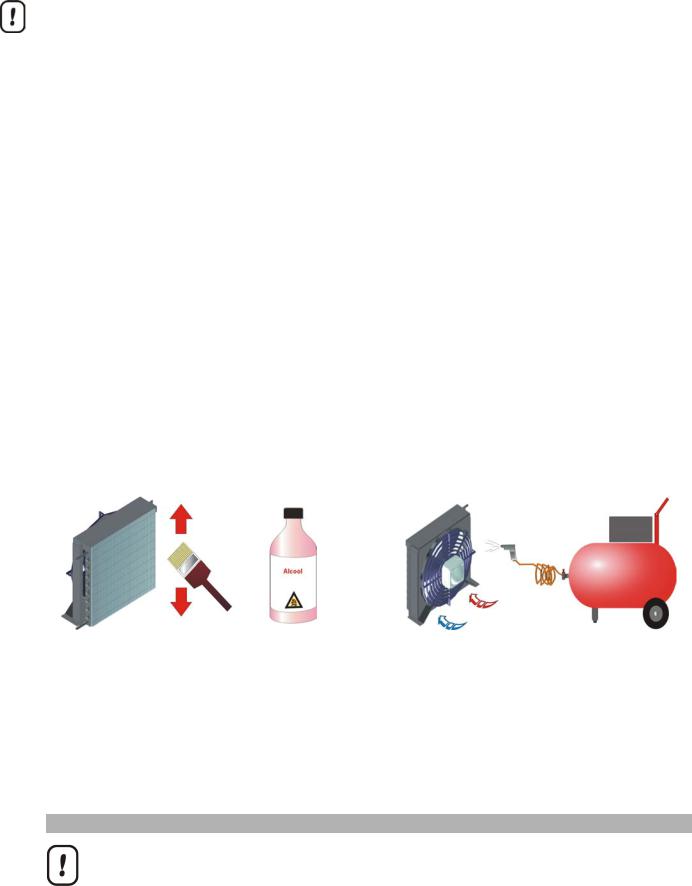
É assolutamente vietata la rimozione delle protezioni di sicurezza per eseguire le operazioni di manutenzione ordinaria. Il Fabbricante si esime da qualsiasi responsabilità per incidenti dovuti all’inadempienza del suddetto obbligo.
8. 1. 2 INDICAZIONI SULLE OPERAZIONI DI EMERGENZA IN CASO DI INCENDIO
•Staccare la macchina dalla presa elettrica oppure interrompere l’alimentazione generale;
•Non utilizzare getti d’acqua;
•Usare estintori a polvere o schiuma.
8. 1. 3 PULIZIA DELLE PARTI ESTERNE
Allo scopo vengono indicati:
•I prodotti di pulizia: acqua e detergenti neutri non abrasivi (NON USARE SOLVENTI);
•I metodi di pulizia: lavare con panno morbido o spugna;
•La frequenza: si consiglia settimanale.
8. 1. 4 PULIZIA DEL CONDENSATORE
L‘efficienza dell’unità condensante è compromessa dall’intasamento del condensatore per cui è necessario provvedere alla pulizia dello stesso con frequenza settimanale. Prima di effettuare questa operazione spegnere la macchina, disinserire il cavo di alimentazione e procedere come segue:
•Con l’ausilio di uno getto d’aria o pennello asciutto a setola rigida e/o spazzola, eliminare, con
movimento verticale (Fig. 6) la polvere e la lanugine depositata sulle alette.
Nel caso di depositi untuosi si consiglia l’impiego di un pennello imbevuto di alcool o simile. Ad operazione ultimata avviare nuovamente l’unità.
Fig. 6
8. 1. 5 VERIFICHE PERIODICHE DA ESEGUIRE
Periodicamente bisogna verificare l’integrità dei cavi elettrici e degli organi elettrici.
9.MANUTENZIONE STRAORDINARIA E RIPARAZIONE
La Manutenzione Straordinaria e la riparazione sono compiti riservati esclusivamente al personale specializzato ed autorizzato dal fabbricante.
Si declina ogni responsabilità per interventi condotti dall’utilizzatore, da personale non autorizzato o per l’utilizzo di ricambi non originali.
13

10.DIAGNOSTICA
Nella seguente tabella sono riportati i guasti più frequenti, le possibili cause e i relativi rimedi.
DESCRIZIONE GUASTO |
POSSIBILE CAUSA |
SOLUZIONE |
|
Interruttore generale su “OFF” |
Interruttore generale su “ON “ |
L’ apparecchio non si accende |
Manca tensione |
Verificare spina, presa, fusibili, linea elettrica |
|
Altro |
Contattare assistenza tecnica |
Il gruppo frigorifero non parte |
Raggiunta temperatura impostata |
Impostare nuova temperatura |
|
Sbrinamento in corso |
Attendere fine ciclo, spegnere e riaccendere |
|
Pannello comando in avaria |
Contattare assistenza tecnica |
|
Altro |
Contattare assistenza tecnica |
Il gruppo frigorifero funziona |
Locale troppo caldo |
Aerare maggiormente |
continuamente ma non |
Condensatore sporco |
Pulire il condensatore |
raggiunge la temperatura |
Fluido frigorigeno insufficiente |
Contattare assistenza tecnica |
impostata |
Arresto ventola condensatore |
Contattare assistenza tecnica |
|
Tenuta insufficiente sportello |
Verifica guarnizioni |
|
Evaporatore brinato |
Sbrinamento manuale |
|
Valvola sbrinamento aperta |
Contattare assistenza tecnica |
Il gruppo frigorifero non si |
Pannello comando in avaria |
Contattare assistenza tecnica |
ferma alla temperatura |
Sonda temperatura in avaria |
Contattare assistenza tecnica |
impostata |
Porta non chiusa ermeticamente |
Chiudere porta |
Blocco di ghiaccio |
Uso improprio |
Contattare assistenza tecnica |
sull‘evaporatore |
Pannello comando in avaria |
Contattare assistenza tecnica |
Ristagno di acqua o ghiaccio |
Carico ostruito |
Pulire la piletta e lo scarico |
nel gocciolatoio |
Macchina non livellata |
Contattare assistenza tecnica |
L‘apparecchio è rumoroso |
Macchina non livellata |
Controllare che l‘apparecchio sia livellato. |
|
Contatti di corpi estranei |
Controllare che qualche tubo e le pale del |
|
|
ventilatore non siano in contatto con corpi |
|
|
estranei. |
|
Viti e bulloni allentati |
Serrarli |
|
Altro |
Contattare assistenza tecnica |
PER GARANTIRE L’EFFICIENZA DELL’APPARECCHIO E PER IL SUO CORRETTO FUNZIONAMENTO É INDISPENSABILE ATTENERSI ALLE INDICAZIONI DEL COSTRUTTORE FACENDO EFFETTUARE DA PERSONALE PROFESSIONALMENTE QUALIFICATO LA MANUTENZIONE PERIODICA.
(NORME DI LEGGE SULLA PREVENZIONE INFORTUNI SUL LAVORO PER L’INSTALLAZIONE ELETTRICA DEGLI APPARECCHI ).
SI FA OBBLIGO DI ATTENERSI ALLE VIGENTI DISPOSIZIONI DI LEGGE SULLA PREVENZIONE INFORTUNI.
11.RICAMBI
11.1FORNITURA DI RICAMBI ORIGINALI
Per eventuali sostituzioni di componenti i ricambi possono essere acquistati presso i nostri centri autorizzati, fornendo:
•numero di matricola e anno di costruzione (vedi targa A);
•numero di identificazione componente (vedi Allegato 13.2.3).
Ogni malfunzionamento addebitabile all’uso di ricambi non originali non sarà riconosciuto dai nostri tecnici e comporterà la perdita della garanzia.
14

12.DEMOLIZIONE
Il gas presente nell’impianto deve essere estratto da personale autorizzato. Per quanto concerne la massa metallica è sufficiente la suddivisione tra le parti acciaiose e quelle in altri materiali, per un corretto invio al riciclaggio.
13.ALLEGATI
13. 1 |
DICHIARAZIONI |
|
|
Si allegano le seguenti Dichiarazioni : |
|
|
|
• |
Dichiarazione di Conformità alla DIRETTIVA |
98 |
/ 37 / CE |
• |
Dichiarazione di Conformità alla DIRETTIVA |
89 |
/ 336 / CE |
• |
Dichiarazione di Conformità alla DIRETTIVA |
73 / 23 / CE |
|
13. 2 |
DOCUMENTAZIONE TECNICA |
|
|
Si allega la seguente documentazione tecnica:
1.Istruzioni controllo:
1.1Controllo Elettronico;
1.2Controllo Elettromeccanico;
2.Analisi Fonometrica;
3.Schema di montaggio;
4.Schemi elettrici;
4.1Schema di collegamento vaschetta autocondensante
5.Temperature di conservazione consigliate;
6.Certificazione di garanzia;
7.Certificazione di collaudo.
15

INDEX
1. GENERAL INFORMATION page 2
1.1MANUFACTURER
1.2SERVICE CENTRES
1.3CERTIFICATION
1.4GUARANTEE
1.5PREARRANGEMENTS OF CUSTOMER'S RESPONSIBILITY
1.6STRUCTURE OF THE MANUAL
1.6.1AIMS AND CONTENTS
1.6.2WHO THE MANUAL IS FOR
1.6.3CONSERVATION
1.6.4SYMBOLS USED
2. |
DESCRIPTION AND OPERATION OF THE APPLIANCE |
page |
4 |
2.1 |
DESCRIPTION |
|
|
2.2 |
OPERATION |
|
|
3. |
PREARRANGEMENTS |
page |
4 |
3.1ILLUMINATION
3.2VIBRATION
3.3EMISSION OF SOUND
3.3.1SUPPLIES ON REQUEST
3.4SUPPLIES ON REQUEST
4. |
SAFETY |
page |
5 |
4.1GENERAL WARNING
4.2FORESEEN USE
4.3UNSUITABLE CONDITIONS FOR USE
4.4DANGER ZONES
4.5SWITCHING OFF THE APPLIANCE
4.6PLAQUES
5. |
TRANSPORT AND MOVEMENT |
page |
8 |
5.1 |
TRANSPORT AND MOVEMENT |
|
|
5.2 |
STORAGE |
|
|
5.3 |
CHECKS |
|
|
6. |
INSTALLATION |
page |
8 |
6.1SET UP
6.2ASSEMBLY
6.3PREARRANGEMENTS
6.4CONNECTIONS
6.4.1ELECTRIC
6.4.2HYDRAULICS
6.4.3PREARRANGEMENTS FOR OPTIONALS
7. |
OPERATION |
page |
11 |
7.1STAFF
7.2PUTTING INTO OPERATION
7.3TIMERS
7.4REGULATION OF TEMPERATURE
7.5STORAGE OF FOOD
7.6CONSERVATION OF FOOD
8. |
ROUTINE AND PLANNED MAINTENANCE |
page |
12 |
8.1BASIC SAFETY RULES
8.1.1PROHIBITION OF REMOVAL OF PROTECTION AND SAFETY DEVICES
8.1.2INDICATIONS FOR EMERGENCY OPERATIONS IN THE CASE OF FIRE
8.1.3CLEANING OF THE EXTERIOR
8.1.4CLEANING OF THE CONDENSER
8.1.5PERIODIC CHECKS TO BE CARRIED OUT
9. |
NON-ROUTINE MAINTENANCE AND REPAIRS |
page |
13 |
10. |
TROUBLESHOOTING |
page |
14 |
11. |
SPARE PARTS |
page |
14 |
11 .1 |
SUPPLY OF SPARE PARTS |
|
|
12. |
DEMOLITION |
page |
15 |
13 |
ENCLOSURES |
page |
15 |
13 .1 |
DECLARATIONS |
|
|
13 .2 |
TECHNICAL DOCUMENTATION |
|
|

1.GENERAL INFORMATION
1. 1 MANUFACTURER
As the company boasts considerable experience in the field of industrial refrigeration.
The technological know-how acquired, created during years of research and close contact with the production and marketing at an international level, represents the best guarantee that the manufacturer can offer.
This equipment has been studied inside, externally and in its components, according to the requirements specified by your market. Furthermore every aspect has been checked for functioning and for appearance before being despatched, as shown by the CERTIFICATE OF GUARANTEE AND INSPECTION included in this documentation.
To guarantee the long life of this product, use it according to the suggestions made in this manual.
1.2SERVICE CENTRES
(Sales, Service, Spare parts and Commercial Representation)
RETAILER'S STAMP
For any requirement pertaining to use, maintenance or the request for spare parts, the Customer should use an authorised Service Centre (directly care of the manufacturer), specifying the identification details of the equipment shown on the plaques:
See Plaque A at paragraph 4.6
C 1
1.3CERTIFICATION
The Condensed air Refrigerator Cupboards and Tables and Refrigerator Units are produced in accordance with the European Community Regulations applicable at the time of its appearance on the market.
Because the refrigerator cupboard and table do not come into the ENCLOSED IV of the REGULATION 98/37/CEE, the manufacturer provides self-certification with the CE marking.
1. 4 GUARANTEE
The new equipment is covered by a guarantee.
The GUARANTEE CERTIFICATE is included with this booklet inside every product. If this booklet is not present you can ask your supplier for it, specifying:
17

•The serial number (stamped on the relevant plaque, see paragraph 4.6);
•The date of purchase.
1. 5 PREARRANGEMENTS OF CUSTOMER'S RESPONSIBILITY
It is the Customer's responsibility to carry out everything specified in the documentation.
Unless different prior arrangements have been made, the following are usually the Customer's responsibility:
•Predisposition of the area, including any building work and or canalisation required;
•Electric power supply in accordance with the power regulations in the country of use;
•Cleaning materials.
1. 6 STRUCTURE OF THE MANUAL
The Customer must read the information contained in this Manual very carefully, because the correct predisposition, installation and use are the basis of the Customer - Manufacturer agreement.
1. 6. 1 AIMS AND CONTENTS
This Manual aims to provide the customer with all the information necessary for not only adequate use of the equipment, but also for the safest and most autonomous use possible. It contains information regarding Technical aspects, Operation, Stopping, Maintenance, Spare Parts and Safety.
Before carrying out any operation on the equipment, the User and the Qualified Technicians must carefully read the instructions contained in this Manual.
In the case of any doubts regarding the interpretation of the instructions, call the Retailer for clarification.
1. 6. 2 WHO THE MANUAL IS FOR
This Manual is aimed at both Retailers and users and also to maintenance workers qualified to carry out work on the equipment.
The user must not carry out work reserved for qualified Maintenance workers and/or Technicians.
The Manufacturer is not responsible for any damage caused by lack of respect for this last regulation
1. 6. 3 SAFEKEEPING
The Manual for Use and Maintenance must be kept in the immediate vicinity of the equipment, in an appropriate holder and, above all, protected from liquids and other substances that could make it illegible.
1. 6. 4 SYMBOLS USED
|
SYMBOL |
|
|
MEANING |
|
|
COMMENT |
|
|
|
|
|
|
||||
|
|
|
|
|
|
|
Indicates a warning or a note on a key function |
|
|
|
|
|
|
|
|
or useful information. |
|
|
|
|
|
WARNING |
|
|
Pay great attention to text indicated by this |
|
|
|
A ... |
|
|
|
|
symbol |
|
|
|
|
|
|
|
|
||
|
|
|
|
CONSULTATION |
|
|
It is necessary to consult the Instruction Booklet |
|
|
|
|
|
|
|
before carrying out the operation |
|
|
|
|
C ... |
|
|
|
|
|
|
|
|
|
|
|
|
|
||
18

2. DESCRIPTION AND OPERATION OF THE APPLIANCE
2. 1 DESCRIPTION
The upright refrigerators are condensed air refrigerator units made up of:
•A condensing unit (outside cold storage room)
•An evaporating unit (inside cold storage room)
•A control panel (positioned on the condensing unit), ( see enclosed 13.2.3)
see enclosed 13.2.3)
• Defrosting is of the electric type and it is automatic ( see enclosed 13.2.1).
see enclosed 13.2.1).
•Condensation is air based.
2.2 OPERATION
The upright refrigerators are refrigerator units which function by means of refrigerator compressor of the airtight type. With air tight motion and alternative motion, powered by electricity (monophase or three phase) and using as a refrigerant the fluid R404A / R134A
Principle of refrigerator operation cycle
In thermodynamics for the refrigerator cycle we intend the change of state which a certain body undergoes (for example a refrigerating fluid). The passage of the refrigerating fluid from the liquid state to the gaseous state takes place in the evaporator. Because this is an endothermic phenomenon, it needs heat which, when it happens, is taken from the air which the evaporator comes into contact with. So, when coming out of the evaporator, the vapours of the refrigerating fluid are sucked out by an air compressor and sent to the condenser. If the latter takes away not only the heat that the gaseous refrigerating fluid has acquired during the course of the evaporation (ENTALPIA DI EVAPORATION), but also the calorific equivalent of the compression work, then the fluid returns to the liquid state.
Because liquefaction is an exothermic phenomenon, there is production of heat, which is disposed of through air and through water.
The refrigerant fluid, leaving the condenser, passes through an expansion organ and returns to the evaporator, thus completing the cycle.
3. PREARRANGEMENTS
3. 1 ILLUMINATION
The illumination of the area must conform with the POWER regulations of the country in which the equipment is installed and must, in any case, guarantee good visibility at all points, it must not create dangerous reflections and must allow for easy reading of the controls.
3. 2 VIBRATIONS
In conditions of use which comply with the indications for correct use, the vibrations are not enough to create dangerous situations.
3. 3 EMISSION OF SOUND
The refrigerator unit is designed to reduce the level of noise at source . ( see attached 13.2.2)
see attached 13.2.2)
19

3. 3. 1 SUPPLIES ON REQUEST
It is to be understood that any modification and/or addition of accessories must be explicitly approved of and carried out by the Manufacturer.
|
|
Any alteration or modification of the fridge made by the |
|
|
operator and/or service operator is forbidden for security |
|
WARNING |
reasons. |
|
The manufacturer decline any responsibility for |
|
A ... |
|
unautorizated modifications. |
3. 4 ELECTROMAGNETIC ENVIRONMENT
The refrigerator is designed to function correctly in an industrial electromagnetic environment, coming within the Emissions and Immunities foreseen by the following regulations:
EN 50081-2 Electromagnetic compatibility - General regulation for emission Part 2 Industrial environments - (1993)
EN 50082-2 Electromagnetic compatibility - General regulation for Immunity Part 2 Industrial environments - (1995)
4.SAFETY
4. 1 GENERAL WARNING
The user must read very carefully the information given in this Manual, with particular attention to the appropriate precautions for Safety listed in this chapter.
It is imperative that the User follows the list below:
•Keep the refrigerator clean and tidy;
•Do not remove or alter the plaques placed by the Manufacturer (see 4.6);
•Do not remove or bypass the safety systems;
•Do not touch the equipment with damp or wet hands or feet;
•Do not touch the equipment with bare feet;
•Do not insert screwdrivers or anything else between the protective cover and the moving parts;
•Do not pull the power cable to disconnect the appliance from the power supply;
•Before carrying out any cleaning or maintenance operation, disconnect the appliance from the electric power supply, first switching off the main switch and then removing the plug.
4. 2 FORESEEN USE
The upright and/or table refrigerator has been conceived and built to be used in communities, restaurants, hotels etc.
4. 3 UNSUITABLE CONDITIONS FOR USE
The upright and/or table refrigerator must not be used :
•For purposes which differ from those shown in 4.2
•In an explosive, aggressive atmosphere or where there is a high concentration of oily substances or powders suspended in the air ;
•In an atmosphere with a fire risk ;
•Exposed to bad weather ;
•With adapters, multiple sockets or extension leads.
20

4. 4 DANGER ZONE
There are no danger zones during use because the upright and/or table refrigerator has all the necessary safety devices.
If repairs or maintenance have to be carried out requiring the removal of the safety devices, it is necessary first to make sure that all power sources have been switched off.
For this reason in the upright and/or table refrigerator it is necessary to deactivate: - The electric plant, putting the main switch off and pulling out the plug.
At the end of any work, it is absolutely imperative that all safety devices are re-activated.
4. 5 SWITCHING OFF THE APPLIANCE
For switch off the fridge or table , is necessary to proceed as fallow:
•Turn the main switch on off position
•Remove power cable
21

4. 6 PLAQUES
Plaque regarding the characteristics of the appliance |
PLAQUE A |
Example CE – PCT |
Example NSF - UL |
|
|
Plaque regarding the Electrical apparatus |
PLAQUE B |
Remove the tension before removing the protection
Plaque regarding the Electrical apparatus |
PLAQUE C |
|
Earth symbol |
Plaque regarding the Electrical apparatus |
PLAQUE D |
|
|
Warning! The manufacturer and the retailer |
|
|
decline all responsibility if the power line is not |
|
|
protected by a high sensitivity magnetothermic |
|
|
switch (IN - 16 A ID - 30 mA) |
|
|
|
|
Plaque inside refrigerator |
PLAQUE E |
Max. Level |
max. high load |
|
THE WARNING PLAQUES WHICH HAVE A |
WARNING |
SAFETY FUNCTION MUST NOT BE |
REMOVED COVERED OR DAMAGED. |
A ...
22

5.TRANSPORT AND MOVEMENT
READ CAREFULLY THE WARNINGS CONTAINED IN THIS MANUAL AS THEY SUPPLY IMPORTANT INFORMATION REGARDING THE SAFETY OF INSTALLATION, USE AND MAINTENANCE.
KEEP THIS MANUAL SAFE FOR FURTHER CONSULTATION.
5.1TRANSPORT AND MOVEMENT
The transport and movement of the upright and/or table refrigerators must take place in the upright position, respecting any indications shown on the packaging.
Transport must be carried out by qualified staff.
The upright and/or table refrigerators must be transported in such a way as to avoid any damage.
The appliance is prepared for transport with or without packaging depending on the means of transport and the route. If packaged, it is in cardboard or wood, adequately protected.
Movement must be carried out using a lift truck or trans-pallets with suitable forks (length at least 2/3 of the dimensions of the object)
Damage to the appliance caused during transport and movement is not covered by the GUARANTEE. Repairs or substitution of damaged parts is at the
Customer's expense.
5. 2 STORAGE
In the case of long periods of inactivity, the upright and/or table refrigerators must be stored with attention to the relevant storage place and time:
•Store the upright and/or table refrigerator in an enclosed area;
•Protect upright and/or table refrigerator from bumps or stress;
•Protect upright and/or table refrigerator from high thermal variation;
•Avoid upright and/or table refrigerator coming into contact with corrosive substances.
5. 3 CHECKS
Before putting upright and/or table refrigerator into operation, it is necessary to carry out a series of checks to prevent errors or accidents during the activating phase:
•Check that there has not been any damage to the upright and/or table refrigerator during assembly.
•Check with care the integrity of the control panel, the electric cable and the tubes.
•Check the precise connection to external energy supply.
•Check the free movement and rotation of any moving parts.
6.INSTALLATION
For an optimum functioning of the unit it is advisable to place the refrigerator in a zone with a good ex change of air and far away from any sources of heat.
23

6. 1 SET UP
•Carefully remove the packaging from the refrigerator;
•Remove the white PVC protection film from the stainless steel and all the protection used by the company to reduce the risk of damage during transport;
•Place the refrigerator on a flat level surface (use the adjustable feet). (Fig. 1)
Before use, clean the refrigerator with a clean, soft cloth or using a spray product. It is best to use little water as it contains minerals which leave traces which are difficult to remove quickly.
•Wash the tray and all the internal parts using anti-bacterial detergents to be found commercially;
•Remove the detergent with a soft sponge soaked in water and dry with a clean soft cloth .
Do not use abrasive detergents or powders which could make the finish opaque.
During these phases do not, as already stated, use great quantities of water which could damage electric parts; a damp sponge is sufficient.
•Place the shelf supports inside the refrigerator, in the most suitable position for use, inserting each support in to the holes on the base of the refrigerator and inserting the side tab in the appropriate place on the sides or on the table supports (Fig. 2)
•Slide the shelf into the supports as shown in (Fig. 2)
•Slide into the appropriate runners, on the lower part of the refrigerator, the condensation waste tray and for appliances which have automatic trays, connect the connector. (Fig. 3)
vaschetta |
Evaporation |
condensing |
water tray |
guidareggi vaschetta |
GUIDE |
Fig. 1 |
Fig. 2 |
Fig. 3 (see 13.2.4.1) |
6. 3 PREARANGEMENTS
•Check that the cables and the sockets are suitable for the power absorbed by the equipment.
THE USE OF ADAPTORS, MULTIPLE SOCKETS AND/OR EXTENSION LEADS IS FORBIDDEN
•Ensure that the upright and/or table refrigerator is not installed near to sources of heat like: ovens, radiators, direct sunlight etc.
•Leave a space of at least 75 mm (3 inches) between the back of the upright and/or table refrigerator and any wall, to avoid the formation of condensation.
•The motor must be free of any obstacle which could hinder or limit the circulation through the condensing unit situated on the top side part of the refrigerator.
•The distance between the refrigerator and the ceiling must not be less than 50 cm (19¾ inches).
•Check that the environment has a sufficient change of air, in order to guarantee the cooling of the condenser and the compressor unit.
24

•For a perfect functioning of the equipment, the maximum temperature of the environment should not exceed + 43°C (109°F), except for Compact Line, Eco Line and Eco Pizza which should not exceed 35°C (95°F).
Lack of respect for these conditions will provoke a serious decline in the functioning of the equipment, early ageing of the compressor and a much higher consumption of energy than normal (Fig. 4)
Fig. 4
CONSULT THE INFORMATION CONTAINED IN PARAGRAPH 1.5
C 2
6. 4 CONNECTION
To avoid any kind of problem when upright and/or tables are switched on is good to attend to the instruction as follow.
6. 4. 1 ELECTRICAL
The electrical connection of the upright and/or table refrigerator is the Customer's responsibility.
The connection to the power supply must respect the power supply laws of the country in which the equipment is installed. (see plaque A)
•Check that the tension of the power supply is exactly that shown on the plaque (See Plaque A)
•Check that the socket conforms to power regulations.
•Pay particular attention that there are no uncovered wires.
•Check the earth.
THE EARTH CONNECTION IS A LEGAL SAFETY REQUIREMENT (See Plaque C).
If more than one piece of equipment is placed in line, each one must have an independent power supply.
25

In order to safeguard the electric plant of the refrigerator from any overloads or short circuits, install a magnetothermic switch at the head of the socket with adequate interruption power
(See Plaque D).
6. 4. 2 HYDRAULICS
If the model does not include a condenser unit, it is necessary to connect it to a drainage system for the discharge of water from defrosting using a suitable tube of appropriate dimensions.
6. 4. 3 PREARRANGEMENTS FOR OPTIONALS
Locks: all the upright refrigerators are predisposed for the installation of locks, even those models which do not include them. For assembly see Fig.5.
Fig. 5
7. OPERATION
7. 1 PERSONNEL
The staff who are to use and install the appliance, must possess (or acquire through adequate formation and training) the following skills and must understand the contents of this manual and all the relevant Safety Information:
•General technical knowledge enough o understand the contents of the Manual.
•Awareness of the main hygiene, accident prevention and technological regulations.
7. 2 PUTTING INTO OPERATION
If the equipment has been mistakenly positioned horizontally during transport, wait about 2 hours, after putting it into a vertical position, before putting it into operation.
7.3TIMERS
See enclosed Manual for Instructions and Use 13.2.1.2
7. 4 TEMPERATURE REGULATION
The choice of temperature must take into consideration:
•The type of product which is going to be kept in the cold storage room (see attached 13.2.5);
•The temperature of the environment;
•The frequency of opening.
26

It is to be remembered that:
•Negative refrigerators (- 10°C / - 25°C) (14°F / 32°F) : are suitable for the conservation of frozen products for long periods of time and for the freezing of small quantities of fresh foodstuffs of small dimensions.
In any case, before loading the equipment, it is necessary to wait until the cold storage room have reached the correct temperature, checking it on its thermometer. If there are any brief interruptions to the electricity supply, it is probable that the compressor might start with some delay; this is perfectly normal.
CONSULT THE INFORMATION IN ATTACHED 13.2.1
C2
7.5 STORAGE OF FOOD
In order to obtain the best possible working of the refrigerator, it is necessary to respect the following indications:
•Do not put hot foods or uncovered liquids into the cold storage room;
•Wrap up or cover all foods, especially those with strong aromas or cream;
•Organise the foodstuffs inside the cold storage room in such a way as not to block the circulation of air with superfluous objects (see plaque E);
•Avoid to keep open the door for long periods of time;
•Wait a few moments before opening a door which has just been closed.
7.6 CONSERVATION OF FOOD
The main cause of the degradation of food and other organic substances is the multiplication of bacteria contained in the cold storage rooms which make up the foodstuff. The production of bacteria is greatly slowed down if the temperature of the foodstuff is lowered, in fact, every product, on the basis of its organic characteristics, requires the appropriate temperature and environmental conditions. For the conservation refrigerators, tables, freezers, cold storage rooms and mini cold storage rooms are to be used correctly;
In order to be able to use the purchased appliance in the best way possible, it is advisable to pay attention to:
•Freezing points;
•Characteristics and data relevant to the conservation of frozen products.
•For the suggested freezing temperatures, see Attached 13.2.5.
8.ROUTINE AND PLANNED MAINTENANCE
The information contained in this chapter is aimed at the User (non specialised person) and at the Ordinary Maintenance Staff
8. 1 ELEMENTARY SAFETY REGULATIONS
8. 1. 1 PROHIBITION OF REMOVAL SAFETY DEVICES
The removal of safety protection is absolutely forbidden for the carrying out of ordinary maintenance work.
The Manufacturer decline any responsibility for any accident caused by the lack of respect for the above written regulation.
27

8. 1. 2 INDICATIONS ON EMERGENCY OPERATIONS IN CASE OF FIRE
•Remove the plug from the socket or switch off at the mains;
•Do not use water jets;
•Use powder or foam extinguishers.
8. 1. 3 CLEANING OF THE EXTERNAL PARTS
The following are indicated for this purpose:
•Cleaning products: water and neutral non abrasive detergents (DO NOT USE SOLVENTS) ;
•Cleaning methods: wash with a cloth or a sponge;
•Frequency: weekly.
8. 1. 4 CLEANING OF THE CONDENSER
The efficiency of the condenser unit is compromised by the blocking of the condenser which makes it necessary to clean it weekly. Before carrying out this operation, switch off the appliance, remove the power cable and proceed as follows:
•With the use of an air jet or dry brush with rigid bristles, eliminate, with a vertical movement (as shown in Fig.6), the dust and down from the wings.
In the case of oily deposits, use a brush soaked in spirit or similar product. When the operation is finished, start the appliance up in the normal way.
Fig. 6
8. 1. 5 PERIODIC CHECKS TO BE CARRIED OUT
It is necessary to check periodically that the electric cables and the electric parts are undamaged.
9.NON ROUTINE MAINTENANCE AND REPAIRS
Non routine maintenance and repairs must be carried out by qualified personnel authorised by the manufacturer.
The manufacturer declines any responsibility for jobs carried out by unauthorised personnel or the use of non-original spare parts.
28
